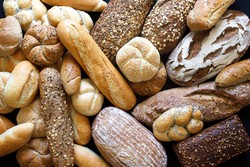Newly developed bread cuts appetite
Melanoidins are produced during the Maillard reaction. High temperatures and a chemical reaction between amino acids and reducing sugar give that characteristic browning effect. Not only does food taste and look better but there is a substantial benefit derived from satiation, particularly in energy-dense foods. Non-digestible melanoidins are structurally similar to fibre and are common in coffee and bread crusts. The EU-funded CHECKMATE-TO-HUNGER (Checking melanoidins satiating efficiency through evaluation of human gut-brain response to novel-bread ingestion) project has produced different types of bread containing melanoidins. Putting them to the test as breakfast in a controlled human trial, the team assessed their effects on appetite and chemical consequences including blood glucose levels and insulin secretion. Fifteen healthy, normal weight volunteers ate two newly developed breads, the coffee melanoidins and bread crust melanoidins, which were then compared to two breads, also specially designed by the project, barley beta-glucans bread (with fibre) and the control bread. Feelings of hunger were strongly reduced after coffee melanoidins-enriched bread or beta-glucans-enriched bread in comparison to the control bread. Gastrointestinal peptide and insulin secretion both decreased with the melanoidins breads as compared with control bread. As regards satiety and reduced appetite, increases in plasma cannabinoids were associated with coffee melanoidins-enriched bread and the bread crust melanoidins-enriched bread in comparison with the beta-glucans-enriched bread. Conversely, levels were significantly decreased after eating control bread. Extra data was derived from a satiety gene expression microarray that was used to monitor volunteers on beta-glucans bread. CHECKMATE-TO-HUNGER research results show that bread fortified with the food product melanoidin can be used to reduce food intake with the same effectiveness as bread with fibre. Cutting energy intake generally will benefit diseases associated with overweight and obesity.







